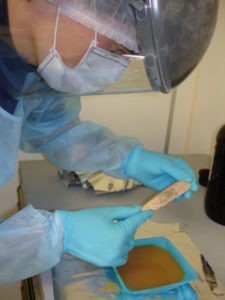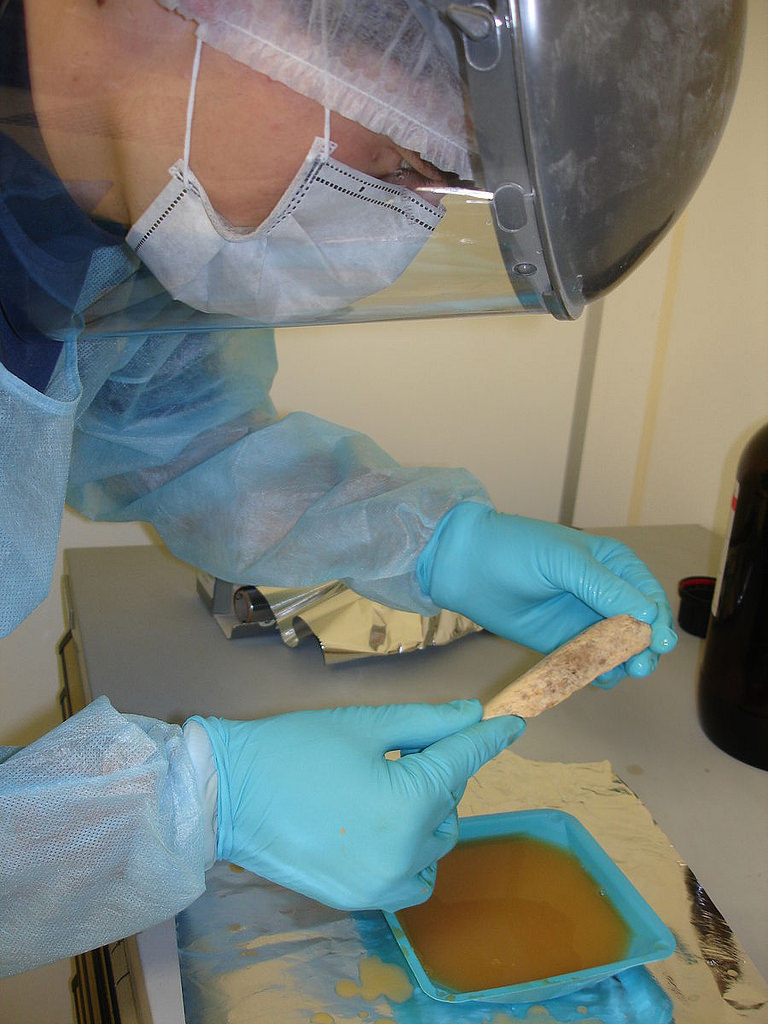
AMERICAN ASSOCIATION FOR THE ADVANCEMENT OF SCIENCE—Two new studies on ancient genomes provide valuable insights into the lives of our ancestors and their cousins, the Neandertals. First, scientists have sequenced a new genome of a female Neandertal, which is only the second genome of the species to be fully sequenced with such a high level of quality. The advancement confirms a number of theories about Neandertals, but also reveals new genetic contributions of the species to modern-day humans. Neandertals are the closest evolutionary relatives of all present-day humans and therefore provide a unique perspective on human biology and history. Five Neandertal genomes have been sequenced to date, yet only one yielded high-quality data, an individual found in Siberia known as the “Altai Neandertal.” Three less well-defined genomes come from individuals found in a cave, Vindija, in Croatia, and one from Mezmaiskaya Cave, in Russia. Here, Kay Prüfer and colleagues successfully analyzed billions of DNA fragments sampled from a new individual in the Croatian cave, dubbed Vindija 33.19, a female who lived roughly 52,000 years ago. Similar to previous findings, the genetic data suggest that Neandertals lived in small and isolated populations of about 3,000 individuals. The previously sequenced Altai Neandertal genome suggested that the individual’s parents were half-siblings, prompting scientists to wonder if Neandertals commonly interbred with family members – yet the new Vindija genome does not have similar incestual patterns, suggesting that the extreme inbreeding between the parents of the Altai Neandertal may not have been ubiquitous among Neandertals. Vindija 33.19 does appear to share a maternal ancestor with two of the three other individuals from the Croatian cave who were genetically sequenced, however. The authors use the Vindija 33.19 genome to analyze divergences and gene flow among Neandertals, Denisovans (another extinct species of hominin), and modern humans. Among many findings, they report that early modern human gene flow into Neandertal populations occurred between 130,000 and 145,000 years ago, before the Croatian and Siberian Neandertals diverged. Based on the new high-quality genome, the authors estimate that modern non-African populations carry between 1.8-2.6% Neandertal DNA, which is higher than previous estimates of 1.5-2.1%. Lastly, they identify a wealth of new gene variants in the Neandertal genome that are influential in modern day humans, including variants related to plasma levels of LDL cholesterol and vitamin D, eating disorders, visceral fat accumulation, rheumatoid arthritis, schizophrenia and responses to antipsychotic drugs. A second study by Martin Sikora et al. focuses on the genomes of four archaic, anatomically modern humans that were found at the Sunghir burial site, in Russia. The genomes provide a rare glimpse into the social organization of humans during the Upper Paleolithic period. The individuals, who lived sometime between 34,600 and 33,600 years ago, are all male and unrelated to each other. Furthermore, the researchers did not find inbreeding signatures, as seen with the Altai Neandertal. Given the genetic diversity of these individuals, despite being a part of a small genetic population, the authors suggest that they likely mated outside of their hunter-gatherer clans. The authors also highlight ways in which these genomes compare and mix with Neandertal genomes.
________________________________
Ancient genomes extraction process in the lab. Shown here is a Neandertal bone. Wikimedia Commons
___________________________________________
Article Source: AAAS news release
___________________________________________
Receive 30 days free access to the popular new CuriosityStream lineup of documentaries on science, history, nature, and technology as a new Popular Archaeology premium subscriber.
___________________________________________
Travel and learn with Far Horizons.
____________________________________________







